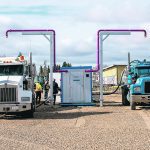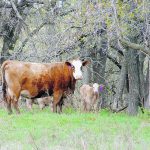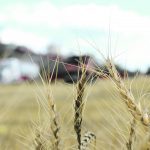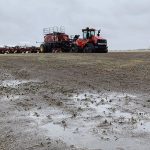Tag Archives Drought — page 5

Plan for drought while rainfall plentiful

Soil moisture deficit persists

Small business feels ag pain

Feds announce early livestock tax deferral
Program has also been streamlined and buffer zones added to ensure eligibility

Alta. town prepares for future water shortages
Officials in Viking, Alta., hope a raw filtered water project will help put local farmers on a better footing for dry times
Glacier FarmMedia – The town of Viking in central Alberta is ready if the tap turns off again in 2024. This time, if drought rears its ugly head, local farmers will be able to fill their agricultural needs from a new raw water pumping station, built with the town’s existing infrastructure. The town celebrated its […] Read more
Pasture outlook seen as ‘cautiously optimistic’
Agronomists urge cattle producers to practise patience when they are tempted to graze immature pastures this spring

Cattle sector aims to break the cycle
Open rates were horrendous in Western Canada last fall: what can producers do to make sure history doesn’t repeat itself?
Glacier FarmMedia – Many beef producers got an unpleasant shock at last fall’s preg check, and experts are weighing in on what can be done to avoid a similar problem this year. According to a report from the Western Canadian Animal Health Network (WeCAHN), more than 40 per cent of some herds were found open. […] Read more
Irrigation study in Alta. comes up dry

Australian cereals production expected to fall
Lack of rain in the states of Western Australia and South Australia may see harvests fall below the 10-year average
Glacier FarmMedia – WINNIPEG — Dry conditions in Western and South Australia may cause declines in the upcoming Australian wheat and barley crops, according to the U.S. Department of Agriculture’s attaché in Canberra. In a USDA Global Agricultural Information Network report released April 29, the attaché forecasted wheat production at 25.8 million tonnes for the […] Read more
Recent precipitation welcome, but more needed
Northern Alberta is particularly dry this spring, but even areas that are receiving rain have low soil moisture reserves




